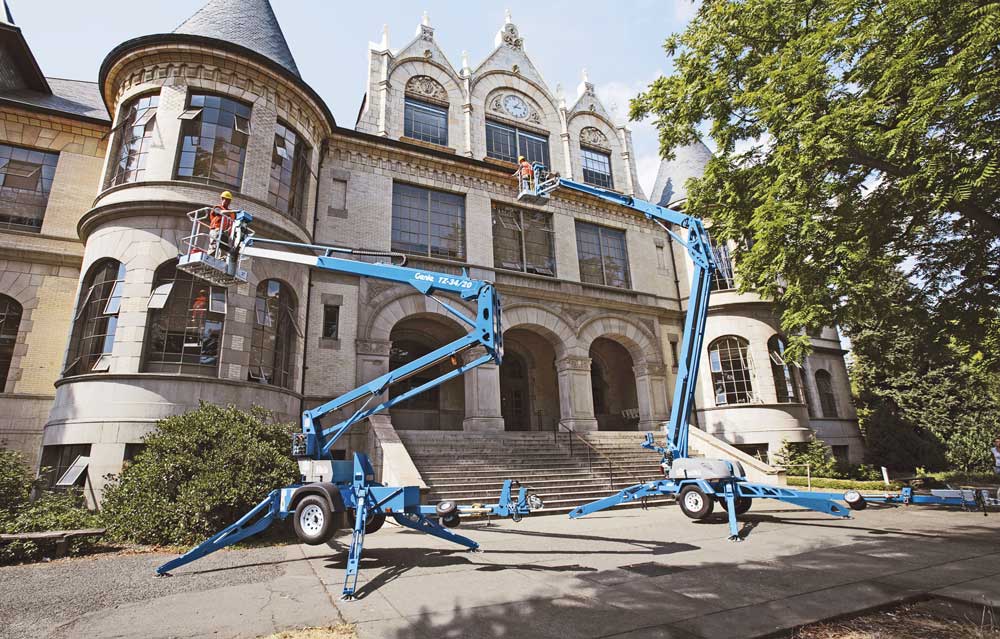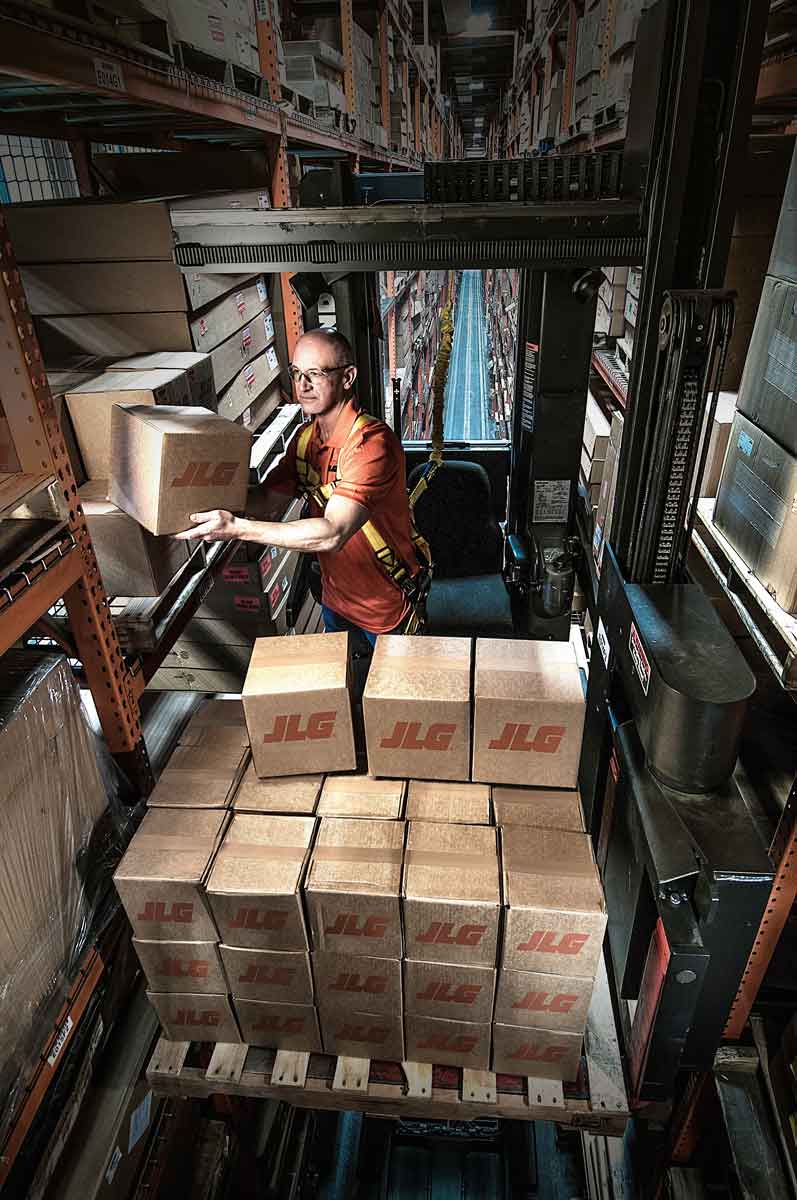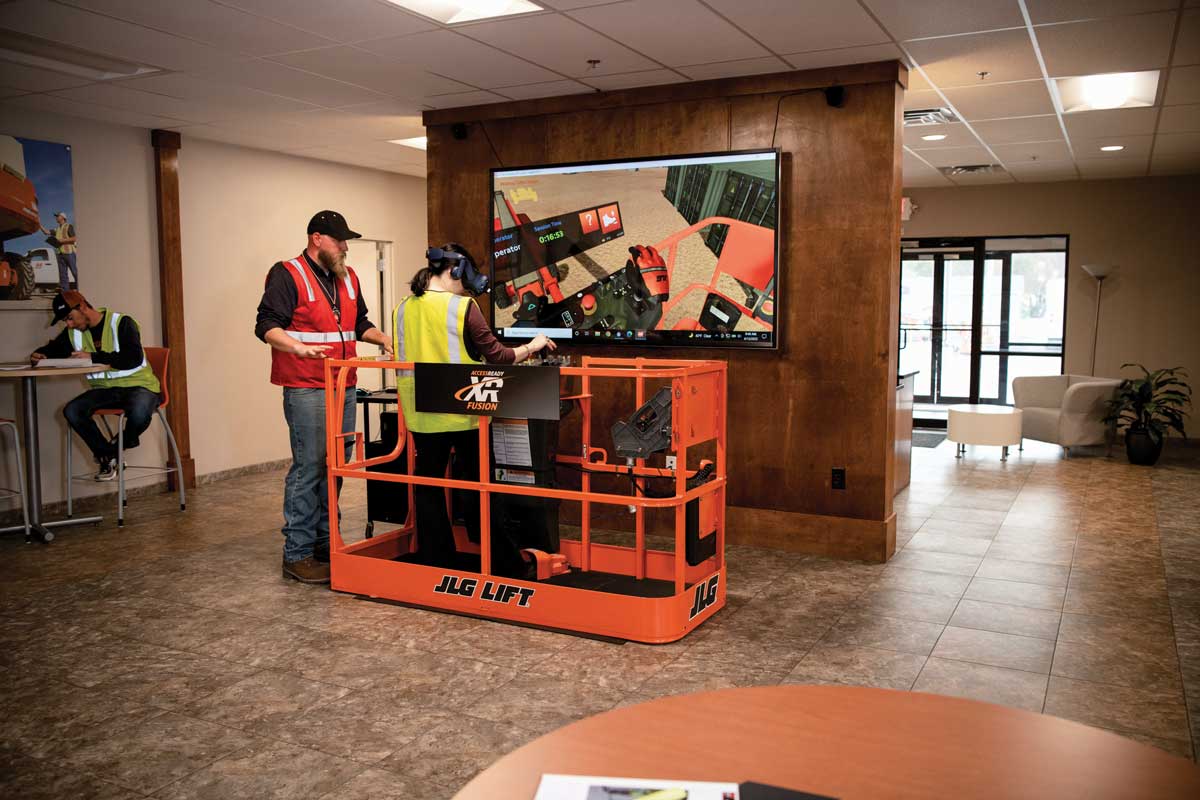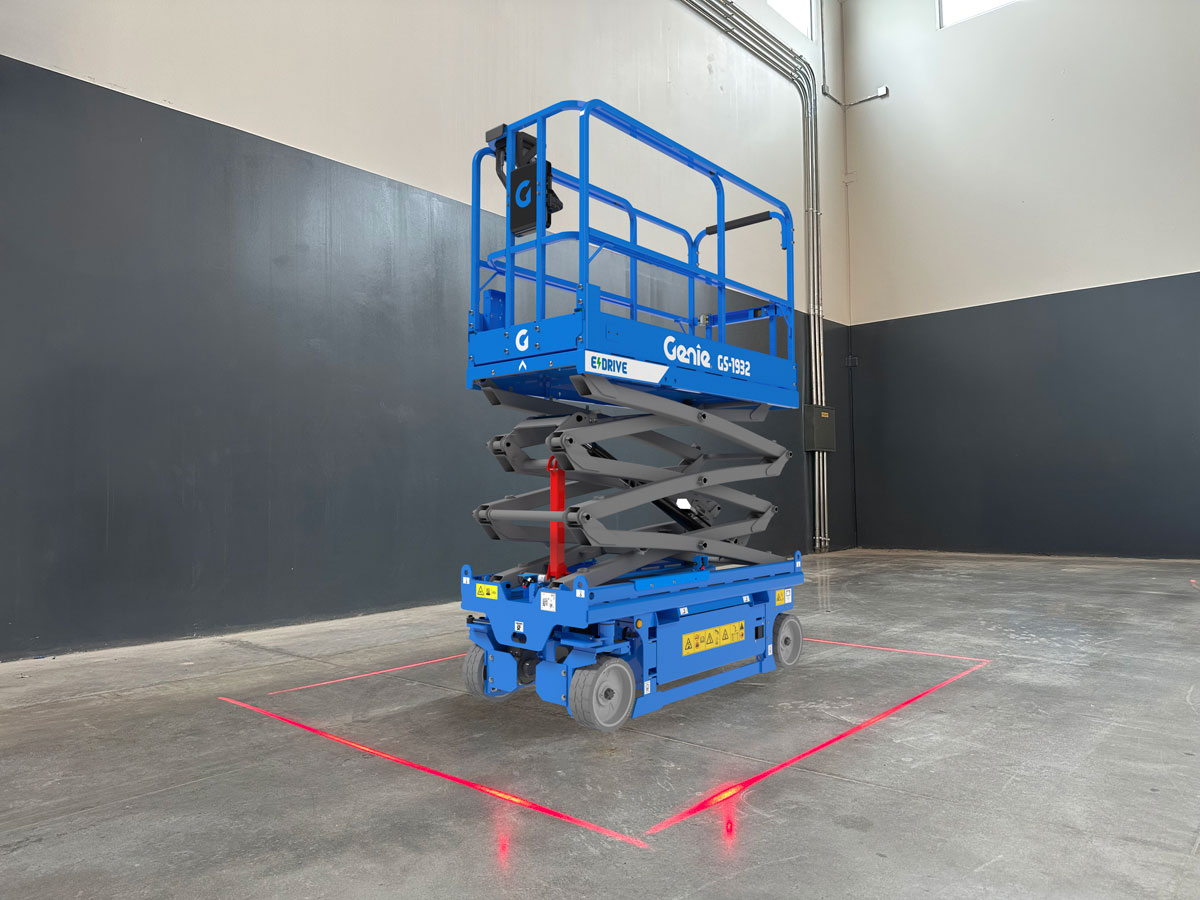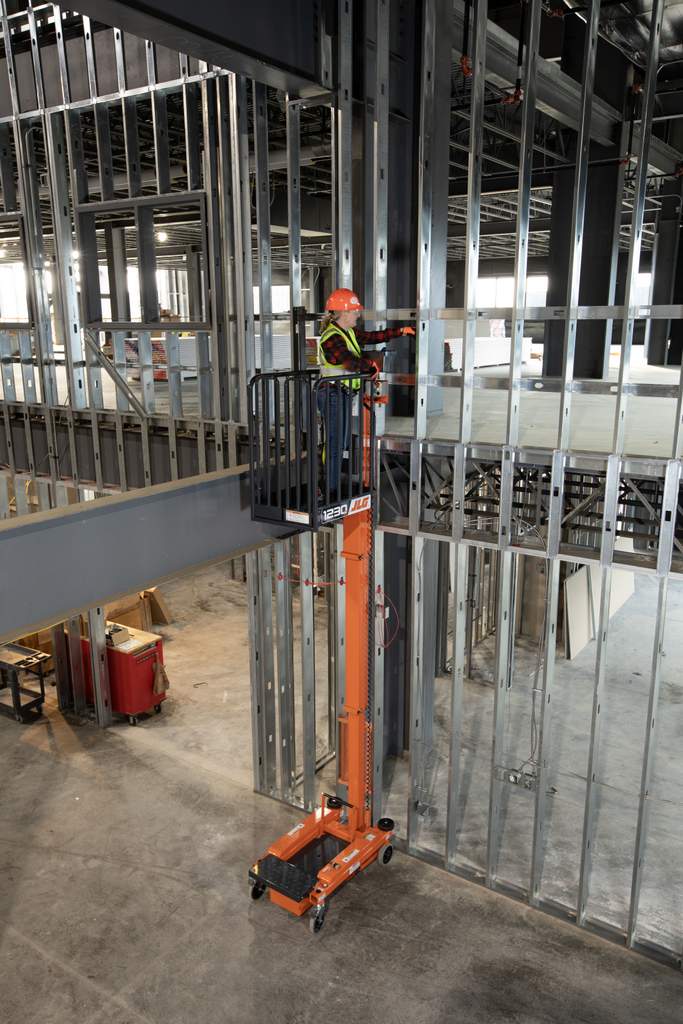Need a Lift?
Grab a Towable Boom Lift and Go
Sometimes your projects call for a lot of height. Maybe it’s washing some windows, tree trimming or putting up holiday decorations. In each case, a towable boom lift can provide an elevated work platform that’s simple to use, easy to transport and light on the wallet.
“With the housing market booming again, contractors are looking for units that help keep their costs low while providing the access they need to do the job,” says Molly Frank, Genie product manager, Terex AWP. “Trailer-mounted booms also offer flexibility to smaller contractors who can easily transport them to multiple worksites in different locations.”
“A major advantage is that users don’t need a delivery truck or a trailer to get a towable boom to the jobsite,” adds Bill Dovey, senior product manager at JLG Industries Inc. “The innovative design allows a contractor or even a homeowner to transport the towable boom lift with a small truck, SUV or station wagon with a hitch. The design is a perfect solution for quick, short-term jobs like cleaning windows or siding, gutters, painting, tree trimming, changing lights, hanging signs or banners, inspecting chimneys and tuck-pointing masonry, to name a few. The outriggers are standard on towable booms and enable the machine to be used on uneven or sloping ground. They are lightweight, so towing them or driving them across turf, flagstone patios, golf course fairways and other sensitive surfaces typically does not cause damage.”
Since towable boom lifts can fit into many applications for all sorts of customers, it’s no wonder why this type of equipment has become extremely popular in the rental market. Another perk of a towable boom lift is its price. Although cost will vary depending on the model and manufacturer, these units are the least expensive boom lifts to purchase or rent.
“Many rental companies view them as a must have because they are a great entry point for smaller yards that may be entering the aerial market,” says Frank. “The acquisition cost is low, and the rates are healthy. Since these types of mobile elevating work platforms [MEWPs] are such a great fit for homeowner and small contractor projects, the opportunity for frequent short-term rentals can provide a strong return on investment. They tend to get high utilization and provide a strong ROI for rental companies.”
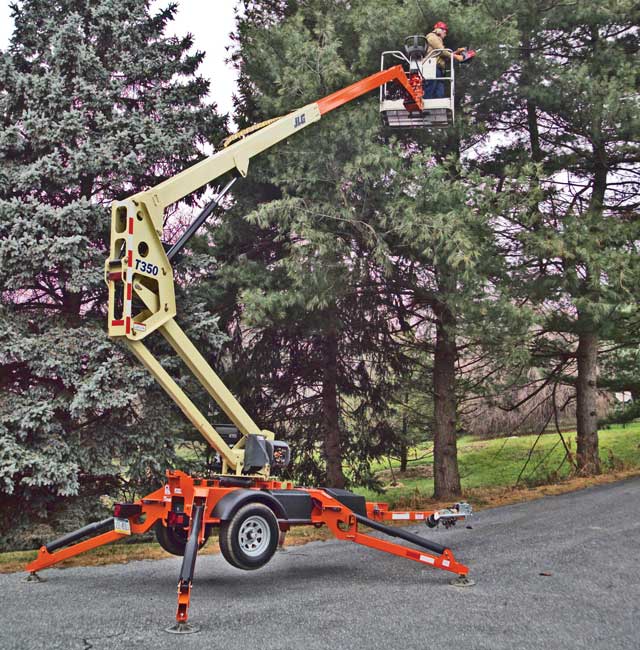
Towable boom lifts are the perfect go-to machine for quick, short-term jobs like cleaning windows, painting and tree trimming.
Finding the Right Lift
Just like any piece of equipment, finding the right towable boom lift starts with knowing your application. Dovey points out that some considerations include platform height and capacity, horizontal reach and whether you prefer or need a battery-powered vs. gasoline-powered unit. Attachments should also be factored into the equation, such as a material hook for lifting supplies or equipment. Dovey adds a few more questions to consider:
1. What size ball hitch is needed to tow the machine?
2. What are the speed limitations for towing?
3. Do you need an accessory mounting tray for a generator or pressure washer?
4. Do you need air and water lines from the turntable to the platform?
5. Do you need 110 VAC wiring to the platform?
Since towable boom lifts are frequently rented by homeowners and small contractors who are less familiar with aerial equipment operations, Frank says it’s important for setup and controls to be simple and intuitive for new users.
“These machines are becoming more and more popular in the weekend rental segment, typically offered by retail hardware and home improvement centers thanks to their easy transport and setup, mobility, versatility to work in a variety of applications and ease of use,” says Frank. “Genie’s auto leveling and push button controls are simple to use once an operator has gone through the required familiarization.”
Genie currently produces two trailer-mounted booms, the Genie TZ-34 and TZ-50 models, which the company says are easy to operate and maintain. Frank notes that both units provide safe lifting solutions to contractors and homeowners, offering a 500-lb platform capacity and true Z-boom (articulated) functionality.
JLG also offers two towable boom lift models — the T350 and T500J — which boast 35- and 50-ft platform heights, respectively.
“We sell just slightly more 35-ft units than 50-ft units,” says Dovey. “This equipment allows homeowners, small businesses and general contractors quick and convenient access to jobs at height and the ease of portability make them very popular.”
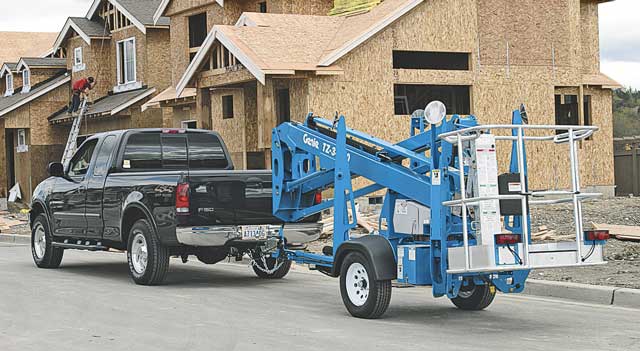
When towing a lift, avoid making sharp turns and quick braking.
Getting to Work
After finding the right towable boom lift, next is putting it to work. First up is towing the unit to the jobsite.
“With towable boom lifts, operators have the additional responsibility of transporting the unit,” explains Frank. “Operators should take the time to ensure correct hookup and drive at the recommended speed for the unit. When towing, any sharp turns and quick braking should be avoided.”
Aside from reiterating the importance of following the speed limit, Dovey also mentions to make sure the unit comes with a spare tire and that it has a “drive and set” feature.
Before operating a towable boom lift, it’s important to read its manual and ensure you are familiar with the machine’s setup and operation. Rental companies and equipment dealers can also provide training or recommend another resource if needed. As with any piece of aerial lift equipment, it’s important to know your surroundings, especially any overhead obstacles.
“Prior to getting into the platform, operators should observe the environment around them, as well as the area above,” says Frank. “If power lines are observed, operations should follow government regulation on required clearance. Towable booms are not electrically insulated. They will not provide protection from electrical current.”
Dovey adds, “If operating on a slope, make sure the outrigger pads are on level surfaces, and use larger outrigger mats under the pads if operating on soft ground or hot asphalt. Be sure not to overload the platform and always wear an approved harness.”
Pam Kleineke is managing editor of Compact Equipment.
North America rental revenue expected to exceed $71 billion in 2023
The new five-year forecast from the American Rental Association (ARA) updated in August calls for equipment and event rental revenues in North America to surpass $71 billion in 2023, including $64.7 billion in the United States and $6.4 billion in Canada. The latest forecast is ARA’s first to project rental revenue for 2023. The current figures, which are updated quarterly, also project slightly less growth for 2019 through 2022 than what was forecast in May.
“The market for the equipment and event rental industry remains positive, but there are definitely signs that the U.S. economic growth is slowing, and this projected slowdown is reflected in our latest forecast,” says John McClelland, Ph.D., ARA vice president for government affairs and chief economist.
“Trade tensions and a slowdown in the global economy are headwinds for the economy with the risk of a recession happening in the U.S. within the next 12 months at about 35 percent,” McClelland says.
For 2019, equipment and event rental revenue in the United States now is expected to be $55.7 billion, up 5 percent over 2018, with growth in 2020 and 2021 at 3.8 percent, 4.1 percent in 2022 and 3.3 percent in 2023 to top $64.7 billion. For more info, visit ararental.org.

